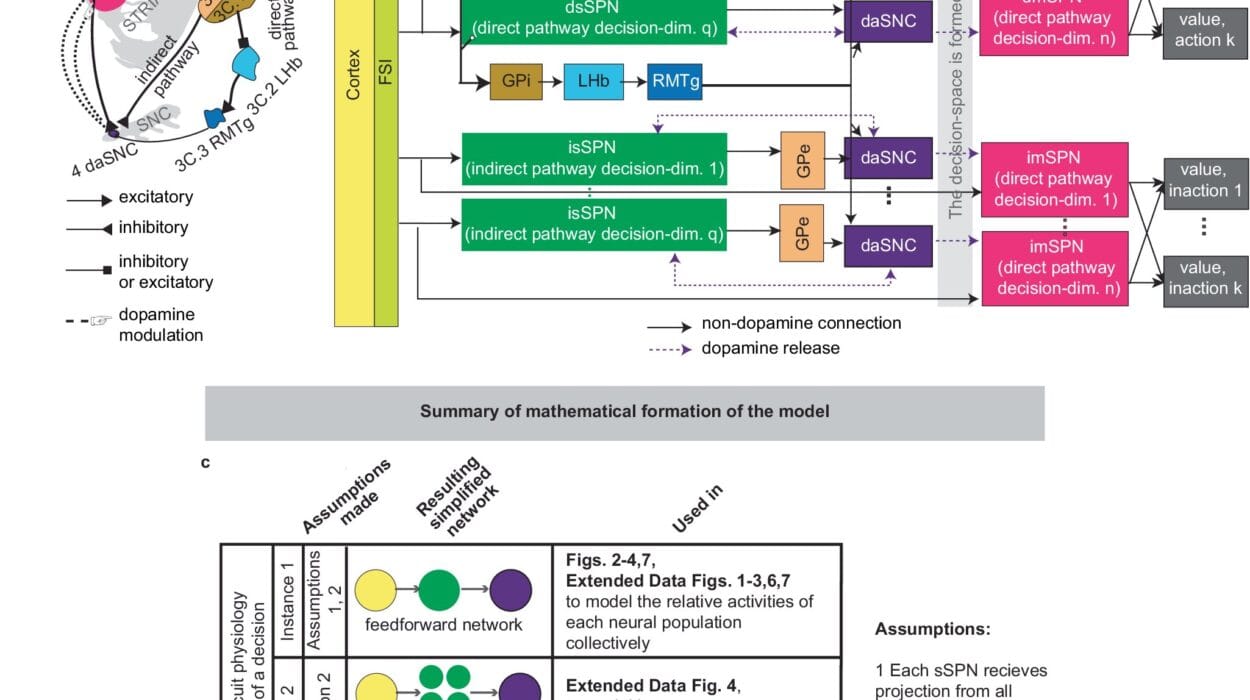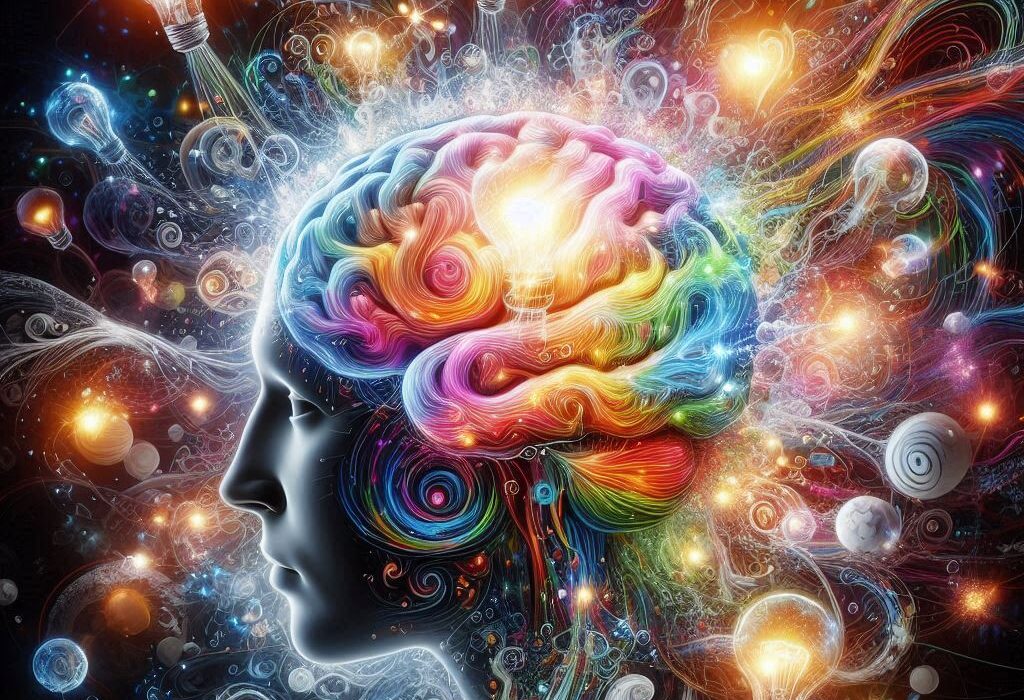Memory is the invisible thread that stitches together the story of who we are. Every smile we recall, every lesson we’ve learned, every person we’ve loved and lost lives inside this vast, intricate network of the mind. Without memory, life would unravel into isolated moments with no past and no sense of self. Yet memory is not a perfect archive—it is fragile, selective, and astonishingly complex.
From the moment we are born, our brains record experiences not as perfect replicas of reality, but as interpretations shaped by biology and emotion. We remember our first day of school, the taste of a childhood meal, the smell of rain on hot pavement—but we also forget countless moments, some fading naturally, others vanishing through trauma or disease. To understand memory is to understand the essence of human consciousness, a science that weaves together biology, psychology, and the mysteries of the mind.
The Architecture of Memory
Inside the human brain lies a labyrinth of neurons—about 86 billion of them—each forming thousands of connections, creating a network so vast it outnumbers the stars in our galaxy. Memory emerges from this network as patterns of communication between neurons. When we experience something new, specific groups of neurons activate together. The brain strengthens these connections through a process called synaptic plasticity, allowing the experience to be stored and later recalled.
Central to this process is the hippocampus, a seahorse-shaped structure deep within the brain’s medial temporal lobe. The hippocampus acts like a master librarian, helping to organize and store new memories. Without it, we struggle to form lasting recollections, as famously shown in cases of amnesia. But memory is not confined to a single place. Sensory memories are distributed across the brain: sights in the visual cortex, sounds in the auditory cortex, and emotions in the amygdala.
This distributed system means recalling a memory is like orchestrating a symphony. When you remember a childhood birthday, your brain reconstructs it—retrieving the smell of cake from one region, the sound of laughter from another, and the emotion of joy from yet another. Memory is not a snapshot; it is a reconstruction, rebuilt each time we recall it.
The Journey of Encoding
Before a memory can be stored, it must be encoded. Encoding is the process by which the brain transforms experiences into neural patterns. This begins with attention. We do not remember every detail of life because the brain filters what it considers important. A loud crash or an emotionally charged event is more likely to be encoded than mundane background noise.
Once attended to, the brain translates sensory information into a form suitable for storage. Short-term memory acts as a temporary holding space, lasting only seconds to minutes. Imagine trying to remember a phone number long enough to dial it—that fleeting recall is short-term memory at work. If we rehearse the information or connect it to something meaningful, it can transition into long-term memory, where it may endure for years or even a lifetime.
Emotion plays a profound role in encoding. Experiences tied to strong feelings—fear, love, excitement—are remembered more vividly because of the amygdala’s interaction with the hippocampus. This is why many people can recall exactly where they were during significant life events but struggle to remember what they ate for lunch last week. Emotion acts as glue, binding memories more tightly into our minds.
The Layers of Memory
Scientists often describe memory in layers or systems that work together to create the full spectrum of remembering. At the foundation lies sensory memory, which briefly holds raw information from the environment—a fleeting image or echo that lasts less than a second. Above it sits short-term or working memory, which temporarily stores and manipulates information we need in the moment.
Long-term memory is more complex. It can be explicit or declarative, encompassing facts and events we consciously recall, or implicit, involving skills and habits we perform automatically without conscious thought. Within explicit memory, semantic memory stores general knowledge—like the fact that Paris is the capital of France—while episodic memory captures personal experiences, such as a trip to Paris.
Implicit memory includes procedural memory, responsible for tasks like riding a bicycle or playing piano, skills that often last a lifetime even if explicit recollection fades. This intricate layering means memory is not a single phenomenon but a collection of interconnected systems working in harmony.
The Magic of Consolidation
Once encoded, memories must be stabilized through a process known as consolidation. In the hours and days following an experience, neural connections are strengthened, making the memory more resistant to interference and decay. Sleep plays a vital role here. During deep stages of sleep, particularly slow-wave and REM sleep, the brain replays recent experiences, transferring them from the hippocampus to the neocortex for long-term storage.
Experiments with animals and humans show that disrupting sleep can impair memory formation, while enhancing certain brain waves during sleep can improve it. This nocturnal memory processing explains why a good night’s rest often leads to sharper recall and why studying before sleep can aid learning. Consolidation ensures that memories, once fragile, become durable parts of our identity.
The Art of Retrieval
Storing a memory is only half the story. Retrieval—the act of bringing a memory back to consciousness—is where memory truly lives. When we recall an event, the brain reactivates the network of neurons that were involved during encoding. This reactivation is not perfect. Like an artist repainting from memory, the brain can add, omit, or alter details, meaning that each recall subtly changes the memory itself.
This reconstructive nature of retrieval explains why eyewitness testimony can be unreliable and why stories told repeatedly evolve over time. Cues—such as smells, sounds, or specific words—can trigger retrieval, sometimes unexpectedly. The scent of a familiar perfume may instantly transport you to a forgotten moment from childhood, illustrating how sensory input can unlock long-buried memories.
The Mystery of Forgetting
If memory shapes who we are, forgetting is the force that sculpts it. We forget far more than we remember, and this is not necessarily a flaw. Forgetting allows the brain to declutter, discarding irrelevant details and making space for new learning. Without it, our minds would be overwhelmed with unfiltered information.
There are several mechanisms behind forgetting. One is decay—the gradual weakening of neural connections over time. Another is interference, where new memories disrupt the recall of older ones or vice versa. Retrieval failure occurs when a memory exists but cannot be accessed, like knowing you know a name yet being unable to recall it in the moment.
Sometimes, forgetting is motivated. Psychologists have documented how people may unconsciously repress memories of trauma or emotional pain as a protective mechanism. While controversial, this concept highlights the complex relationship between memory and emotion. Forgetting is not just loss—it is an active, adaptive process shaping how we navigate life.
The Errors of Memory
Because memory is reconstructive, it is prone to errors and distortions. False memories—recollections of events that never happened—can be implanted through suggestion or the blending of real memories with imagination. The famous experiments of psychologist Elizabeth Loftus demonstrated how easily eyewitness accounts can be manipulated, reshaping how courts handle testimony.
Even genuine memories can be warped. Over time, details fade or shift, and the brain may fill gaps with plausible but inaccurate information. This flexibility of memory is double-edged: it enables creativity and problem-solving but challenges our assumptions about the reliability of personal history.
The Neuroscience of Memory Disorders
When memory falters dramatically, it can signal neurological disorders. Amnesia, caused by brain injury or disease, may erase memories of the past (retrograde amnesia) or prevent the formation of new ones (anterograde amnesia). The case of patient H.M., who lost the ability to form new long-term memories after surgery removed his hippocampi, revealed much about how memory is localized in the brain.
Alzheimer’s disease and other forms of dementia gradually erode memory, stripping away not only facts and skills but pieces of personal identity. Research has linked these conditions to the buildup of abnormal proteins in the brain that damage neurons and disrupt communication. Understanding these mechanisms is crucial for developing treatments to protect and restore memory.
Other disorders, like PTSD, involve the opposite problem: memories that are too strong and intrusive. In PTSD, traumatic experiences are etched so deeply they return as flashbacks and nightmares, overwhelming normal memory processes. Advances in neuroscience are exploring ways to soften these memories without erasing them, offering hope for healing.
The Resilience and Plasticity of Memory
Despite its vulnerabilities, memory is remarkably resilient. The brain can often adapt to injury, rerouting functions to undamaged regions. Rehabilitation therapies teach patients to compensate for memory deficits, and in some cases, people recover seemingly lost memories over time.
Neuroplasticity—the brain’s ability to reorganize itself—offers hope for enhancing memory. Mental exercises, learning new skills, physical activity, and social engagement have all been shown to strengthen memory and slow cognitive decline. The brain is not static; it is a living, changing organ that responds to how we use it.
Technology and the Future of Memory
As neuroscience advances, we edge closer to technologies that could manipulate memory. Brain implants have already restored partial memory function in patients with severe impairments. Experiments with optogenetics in animals allow scientists to activate or silence specific memories with light.
Pharmaceuticals that enhance memory or dampen traumatic recollections are under development. Even non-invasive techniques, like transcranial magnetic stimulation, show promise in improving memory retrieval. These breakthroughs raise profound ethical questions: Should we erase painful memories if we can? Could enhancing memory widen social inequalities?
Artificial intelligence and digital devices also reshape human memory. We increasingly outsource remembering to smartphones and cloud storage, changing how the brain prioritizes information. Some researchers predict we may one day merge biological and digital memory, creating hybrid minds with unprecedented recall.
Memory and Identity
Ultimately, memory is more than a mental function—it is the foundation of identity. Our sense of self relies on continuity between past and present, held together by recollections of who we were and what we have experienced. When memory fragments, as in dementia, identity itself can seem to unravel.
Yet memory is not static. We reinterpret our past constantly, reshaping personal narratives in light of new experiences. This malleability means identity, like memory, is a living story, evolving over a lifetime. Remembering allows us to learn and grow; forgetting lets us heal and move forward.
The Wonder of Remembering
Despite decades of research, memory remains one of the most profound mysteries of neuroscience. We understand the mechanics—neurons firing, synapses strengthening, hippocampi organizing—but the subjective experience of remembering, the way a melody can flood the mind with emotion or a photograph can collapse decades into an instant, transcends biology alone.
Memory bridges time, allowing us to relive moments long gone and imagine futures not yet written. It connects us to others through shared history and culture. It makes learning possible, fuels creativity, and shapes our choices.
In its imperfections—in forgetting, in distortion—memory reveals itself not as a flaw but as a gift finely tuned for survival and meaning-making. We do not remember everything because we are not meant to. We remember enough to become ourselves.
A Living Tapestry
The science of memory shows us that remembering is not like replaying a recording. It is like weaving a tapestry—threads of sensation, thought, and feeling intertwined into a dynamic work of art. Every time we recall, we weave again, altering colors and patterns, adding new strands, sometimes pulling old ones loose.
Forgetting is not the tapestry unraveling; it is part of its design. It creates space for new stories, new knowledge, new ways of being. Memory is not a static archive; it is life itself, constantly rewritten, endlessly resilient, deeply human.
From the firing of neurons to the telling of family stories, from the fragility of aging minds to the promise of technological enhancement, memory defines the human experience. Understanding it brings us closer to understanding ourselves—a journey that, like memory itself, is ever-unfolding, rich with mystery and wonder.






